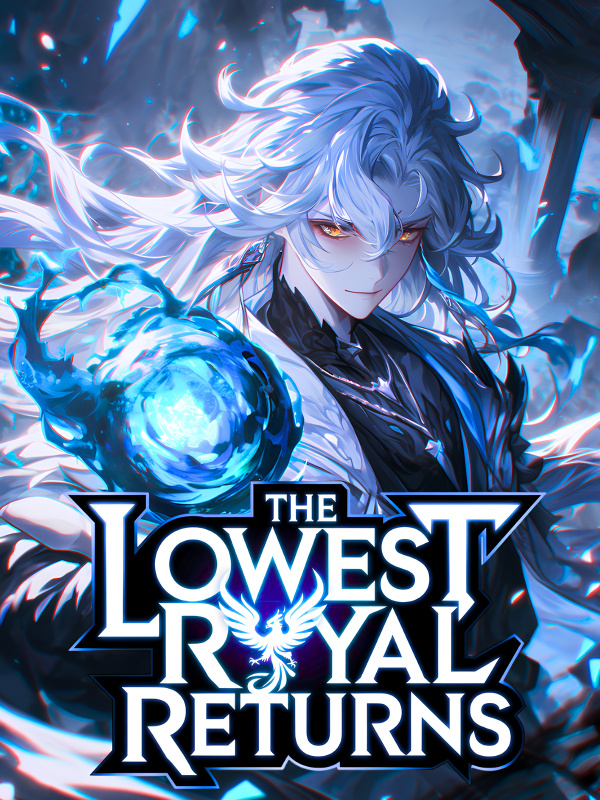©Novel Buddy
Super Genius DNA-Chapter 150: Ministry of Food and Drug Safety (5)
Chapter 150: Ministry of Food and Drug Safety (5)
Doctor Oh Hyun-Dong, a member of the Ministry of Food and Drug Safety’s IRB, the Institutional Review Board for clinical trials, was one of Young-Joon’s supporters. Of course, being a supporter didn’t mean that he was going to be generous in granting clinical approval for Young-Joon’s work; it just meant that he admired the brilliance of the future that a genius like him was building.
Recently, there had been no new clinical trial requests from A-Bio, but this was inevitable. The latest cancer research Young-Joon had done was going to be reviewed by the FDA as it was done in America. The research he had done at the Karolinska Institute in Sweden skipped clinical trials.
‘They technically should have done a clinical trial for that, too.’
It didn’t really matter because the patient strongly asked for it, and the government approved of it with the recommendation from the Swedish Crown. Besides, what could the Ministry of Food and Drug Safety in Korea say about something that happened in Sweden?
Cultured meat was also developed in the United States, and Young-Joon had already proven its safety when he was there. Also, because the safety review was going to be done by the FDA first, there was less for the Ministry of Food and Drug Safety to do.
Simply put, Oh Hyun-Dong was bored. The contrast was even clearer when he thought of the aftereffect of Young-Joon’s induced pluripotent stem cells. Developing the first stem cell treatment for glaucoma, a cure for Alzheimer's, a cure for HIV, a cure for pancreatic cancer... It was hectic for a few months at the ministry as a bunch of drugs were released.
‘Is he going to show us another fascinating technology?’
Oh Hyun-Dong, who came to work and was mindlessly surfing the web, soon regretted what he thought; it was because he got a call from Young-Joon, and what he said was extremely shocking.
“You’re going to do what with mitochondria?” Oh Hyun-Dong shouted.
—The idea is to take mitochondria from human-derived cells, differentiate them so they can proliferate, and use them to transport genes. I want to insert one hundred seven genes into the mitochondria and send it to the brain so that they enter the brain cells. I am going to cure schizophrenia by making those genes be expressed.
“...”
Oh Hyun-Dong dropped the pen that he was using to write down notes.
“Doctor Ryu, this... You’re going too far,” he said. “The usual way to put genes into human cells is with something like the adeno-associated virus (AAV).”
—There’s no way to put one hundred seven genes that way. It’s difficult to put even one gene in there because it’s so small.
“But why are you trying to put in one hundred seven genes?”
—Because we need to do that to cure schizophrenia.
“...”
—I contacted you to see how much preclinical data you will need for me to get approval for a clinical trial with this. I can produce as much animal data as you need.
“I can’t even determine how much animal testing you will need because the experiment is so dramatic and unprecedented. Doctor Ryu, do you know why people use the AAV when putting genes into the body?
—Because it’s safe.
“That’s right. Its safety has been proven. It’s known that AAV does not proliferate after it goes into the target cell. But do you have data on the safety of bacterial mitochondria that you want to use?”
—Isn’t the clinical trial supposed to be for that? A clinical trial always comes with a risk.
“Well... That is true, but...”
—And the reason AAV is safe is because it does not go into the cell’s DNA, right?
“Y...es...”
—The mitochondria doesn’t go into the DNA either. It just stays in the cytoplasm.
“I guess.”
—And it does not proliferate in the body because it needs a high concentration of methane for it to multiply. When it goes into human brain cells, they work just like regular mitochondria, only their genes have been altered.
“...”
—If we can set this up right, it could be very helpful in treating schizophrenia. I know it’s a bit of a radical experiment, but we have to take it to clinical trials. What do I need to get approval?
“Sigh... I will discuss this with the other members. But for the animal experiment, please make it certain that the mitochondria you’re using in your treatment will only go into the brain cells and not anywhere else.”
* * *
—What did they say?
Rosaline said.
“We need evidence that it only enters the brain cells and not any other cells,” Young-Joon replied.
—Well, that’s simple.
“But I am curious, too. How do we get the mitochondria to specifically enter the brain cell? This is much bigger than a virus. It’s going to be difficult to get it in.”
—It’s just like we did with electroporation.
Rosaline replied.
“You’re going to run a microcurrent in the brain?”
—No. Cell membranes in the brain are damaged and repaired a little bit every second because of the electric currents flowing between neurons.
Rosaline said.
—The mitochondria will enter on their own by chance if they are able to stick to the target cells in the brain. The ones that don’t get in will be deactivated by the lack of methane and be eliminated.
“How can we visualize it sticking to the target cells?”
—One of the genes we introduced into the mitochondria is a gene called D7T1.
“D7T1?”
—It’s a custom-made dopamine receptor. With this, the mitochondria we made will track dopamine, like a drug-sniffing dog following a scent. The mitochondria will track it by following the dopamine pathway through the midbrain-limbic system. And it will stick to cells that have high dopamine activity.
“Since the cells with high dopamine activity are the cells that cause schizophrenia, the mitochondria have to enter those cells?”
—That's right. There are over a thousand mitochondria in a cell. We will be putting around one hundred mitochondria in a cell with our drug, and that isn’t going to affect the physiology of the cell very much.
Rosaline said.
—But the one hundred seven genes expressed from it will suppress dopamine production and control serotonin and glutamate to replace drugs.
‘Wow...’
Young-Joon exclaimed in admiration. He had seen Rosaline’s ingenuity several times before, but this was incredible. It seemed like a sci-fi novel when she first brought up mitochondria, but now, it was actually within reach.
Science was about understanding; it seemed fascinating and magical when one didn’t know how it worked, but it became obvious and clear once the logic was discovered. The mechanism of gene therapy through mitochondria was very clear now.
‘Then should we try it on mice?’
Young-Joon injected a solution containing mitochondria into the base of the mouse’s skull with a syringe.
—But did Doctor Song Ji-Hyun say that they caught the schizophrenia early in that patient?
Rosaline asked as Young-Joon was focusing on the experiment.
“I think so.”
—If they caught it early on, it doesn’t usually lead to suicide. We examined him through Synchronization Mode when we ran into him before, right? We saw that it was pretty severe.
“Really?”
—The disease is very advanced.
“But why did Doctor Song say that?”
—Who knows? Maybe she didn’t want to tell you in detail.
Rosaline said.
—I think you should meet with her.
“Really?”
—Even if you obtain great results in animal experiments, it might not be as good clinically.
“Why?”
—Because there are psychological factors that catalyze schizophrenia. Schizophrenia is half genetic and half environmental. The genetic factors like dopamine and things like that mean that you are susceptible to schizophrenia. There are also environmental factors that trigger schizophrenia.
“...”
—Of course, it is not impossible to translate the latter into biology, as any psychological factor works by the electrical signaling in the brain or the release of adrenaline or epinephrine.
Rosaline said.
—But you would have to deal with a huge amount of variables to get that with drugs, and that would take thousands of clinical trials. I can show you a way, but it is not realistic.
“Alright. I’ll meet with Doctor Song,” Young-Joon said as he put the mice in their cages.
* * *
Young-Joon asked Song Ji-Hyun if they could meet up. Unexpectedly, she asked him to come to her house.
—It’s my parent’s place, not mine. I just came here because I had something to do, but my parents aren’t home right now. And there’s no one to take care of my brother. I can’t take him to a cafe or anything so... Just come here.
Song Ji-Hyun gave Young-Joon her address. He hung up and got in his car, but he felt weird. It was the first time he was going to Song Ji-Hyun’s house.
—Don’t get too excited.
Rosaline said.
“W-What? Who says I’m excited?”
—I thought your heart rate was a little high.
“Don’t make a fuss about it. I’m just nervous that I might make a mistake when I ask about the patient.”
Young-Joon took K-Cop’s security car and went to the address Song Ji-Hyun told him. He went into the apartment alone with the security team waiting in the car. The security guard checking his identity at the entrance was surprised to see his face.
“Doctor Ryu? Doctor Ryu Young-Joon? A-Bio...?”
“Yes.”
“Oh my!”
“I’m here for suite 1402. They will tell you if you call them,” Young-Joon said.
“1402? Oh, them...” freew ebnov el
The security guard’s expression darkened a little.
“Why?” Young-Joon asked.
“Nothing. Their daughter told me that someone was going to be here around this time.”
The guard pressed a button, and the door opened. He followed Young-Joon as he walked toward the elevator.
“But why are you going to that house...”
“I’m here to see the daughter.”
“It’s not about that psycho, is it?”
The security guard’s tone was odd. Young-Joon glanced back at him.
“Ahem.”
The security guard cleared his throat with his hand covering his mouth and said quietly, “Be careful, Doctor Ryu. There’s a schizophrenic man in that house. What if he suddenly attacks you?”
“... Does a patient with schizophrenia attack people?”
“Well, they are insane, so it’s easier for them to commit murder... You know. What if someone like you gets hurt?”
“There’s about sixty-eight criminals who commit violent crimes per one hundred thousand people. What about for people with mental illnesses?”
“Pardon?”
“It’s about thirty-three per one hundred thousand people.”
“...”
“People with schizophrenia sometimes have violent tendencies depending on the situation and medication, but it often does not lead to violent crimes,” Young-Joon said. “In fact, there were three or four people who actually tried to kill me, but they were all sane, and the person who ordered them to was an executive of a large company with considerable intelligence.”
“...”
“Well, I understand you because the preconception that the mentally ill can easily commit murder is quite widespread, and I am not saying it’s your fault. But those people are not the Devil or animals,’ Young-Joon said. “They are patients.”
Ding!
The elevator arrived on the first floor. Young-Joon walked in and pressed the button for the fourteenth floor. There was a piece of paper on the wall of the elevator.
[Resident Survey]
Which of the following factors do you think has the greatest impact on the decline in real estate prices? (Place a sticker on the factor you think is the correct answer.)
1. A huge, severely schizophrenic patient.
2. Foreign workers.
3. People with disabilities.
There were over eighty stickers on number one alone.
“Tsk,” Young-Joon clicked his tongue. “Rosaline. I think I know why Doctor Song said that.”
He tore the paper off the wall.
Visit freewe𝑏n(o)vel.𝑐𝘰𝑚 for the best novel reading experience







